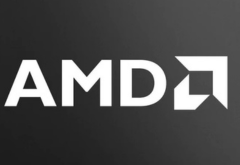Technology has completely changed the way companies exist within the Digital Economy, especially this year which has witnessed multiple innovations and disruptions in all industries. A recently concluded study by Ness Software Engineering Services, a global leader in the product engineering space, reveals that Big Data & Analytics, User Experience and Products & Platforms were integral in organisations succeeding in the digital economy in 2014.
Going ahead, following technology trends will continue to dominate and will be key determinants of success for enterprises in 2015 as well, say Ness experts –
- Big Data & Analytics – Understanding individual customers is a must in the Digital Economy and companies are collecting large tracts of data to personalize offerings. Adoption of Big Data to understand customers and using agile analytics is big on every organization’s radar. Enterprises are utilizing data-driven insights to strategize, make better business decisions, drive innovation, generate new revenue streams, and outperform competition. Big Data is projected to be $28.5 billion this year, as per Wikibon.
- Products and Platforms – The thrust towards “faster time to market, cost reduction and increased operational efficiencies” has hastened the pace at which organizations are leaning towards building Products and Platforms. This approach is primarily centered Scalability, Reusability, and Maintainability. The “Productization” paradigm helps organizations create a robust foundation for execution and makes them nimble enough to be responsive to the ever changing market dynamics and customer needs. The availability of open source technologies is yet another trend that has accentuated the pace at which companies are able to build new products and platforms to compete in the Digital Economy. Big Data Analytics Platforms, Products that allow easy assimilation and analysis of sensor data (IOT), Reporting Platforms that would allow business users to create their own dynamic and visually rich dashboards and reports are all trends that are made possible by the surge in “Productized” way of thinking, driven by business imperatives.
- User Experience – Though around for a while now, and even longer as ‘human-centered design’, 2014 is when some big players really took notice. IBM created 1, 000 user experience roles across the year. It’s estimated that there are currently 25,000 vacant user experience related roles in the US. Even banks are getting in on the action with Capital One buying experience agency Adaptive Path. Companies are having to compete with faster, better, cheaper versions of their products and need great UX to remain competitive in a digitized economy.
- Cloud – Having been adopted by 90 percent of businesses, cloud is now a mainstream part of IT. The value proposition of cloud computing has been clear – easy provisioning, flexible scaling and cost savings. Now we’re seeing apps and workloads that IT never expected would run in the cloud – and they’re often running leaner and faster than ever before. Clouds disrupt. They enable businesses to reinvent and rethink the way they adopt and deliver IT to users and customers. They can change the way tomorrow’s organizations are architected and function.
- IoT – Transformation of inert everyday objects into sensor embedded devices interacting with other devices is perceived to deliver tremendous business value. Digital native organizations are banking on the Internet of Things (IoT) to enhance efficiencies and drive productivity. Oral-B’s connected toothbrush, SkyBell, Nest thermostat are just the beginning of a digitally connected life that seek to provide robust and compelling user experiences. ABI Research predicts the installed base of connected devices to surge from 16 billion at present, to 40.9 billion by 2020. Still in early days, we’re sure IoT remains a promise, an opportunity, something to experiment and continue talking in 2015.
- Wearables – Apple Watch is just the tip of the iceberg. And Microsoft Band a drop in the ocean. Fitness trackers and smartwatches have been flooding the consumer market enticing both consumers and corporations having an obsession with technology. Over 35 million wearables are said to be in use now. Wearable makers Jawbone and Fitbit have convinced employers to buy in bulk for corporate gifting. Corporations have realized the power of wearables to better manage healthcare budgets and reduce insurance premiums. Part of the larger wave of IoT, wearables presents a big opportunity for digital native enterprises seeking to improve organizational efficiency and accelerate growth in the Digital Economy.
- Digital Money and Mobile Pay – Virtual currencies like Bitcoin and innovations like Apple Pay are transforming and re-shaping how transactions are done. The banking system is accepting that digital money and mobile pay isn’t going away. In fact with the penetration of mobile devices, it only stands to grow in scale, and uproot strategies of incumbents. Apple Pay has disrupted traditional payment systems, with established players being compelled to enhance their offerings with value addition targeting device diversity and increased customer adoption.
- 3D Printing – Printing of 3 dimensional objects from a digital file has caught the fancy of industries including airspace, automotive, healthcare. The advantages are far too many. This technology is revolutionizing the way hardware is designed, prototyped and produced by bringing down manufacturing costs significantly. Besides helping enterprises minimize waste, effect lesser time-to-market and utilize less energy. CCS Insight predicts the global 3D printing market to grow from $1.6 billion in 2014, to $4.8 billion by 2018, as more and more digital leaders embrace the phenomenon.
- BYOD – Connecting personal devices of employees including mobiles, tablets and laptops to organizational networks spells huge benefits for enterprises that look towards integrating technology deeply into their businesses. Well secured Bring Your Own Device solutions mean a boost in job satisfaction, better work-life balance, greater innovation, increased productivity, decreased capital spending, and enhanced operations. We’re witnessing organizations being quick in adopting this, riding on the back of a growing mobile user workforce. The global BYOD market is touted to hit $266.17 billion in 2019, from $71.93 billion in 2013, says MarketsandMarkets, with North America grabbing the biggest chunk of the pie.
10. Drones – The advent of drones in the non-military realm is a shot in the arm for giants like Amazon, DHL and the likes. These technology leaders are already dabbling in utilizing such flying machines for aerial delivery of shipments, thus cutting down delivery time and taking the customer experience and satisfaction thresholds notches higher. This may also mean that Product and Platform companies can use their creativity and prowess to build robust data capture and analytics platforms for sensor and other data relayed by drones. Non-military drones are predicted to disrupt industries like disaster recovery, logistics, farming, delivery, entertainment and more.
 Latest Technology News Today – Get Latest Information Technology Updates and Services Latest Technology News Today – Get Latest Information Technology Updates and Services
Latest Technology News Today – Get Latest Information Technology Updates and Services Latest Technology News Today – Get Latest Information Technology Updates and Services 









